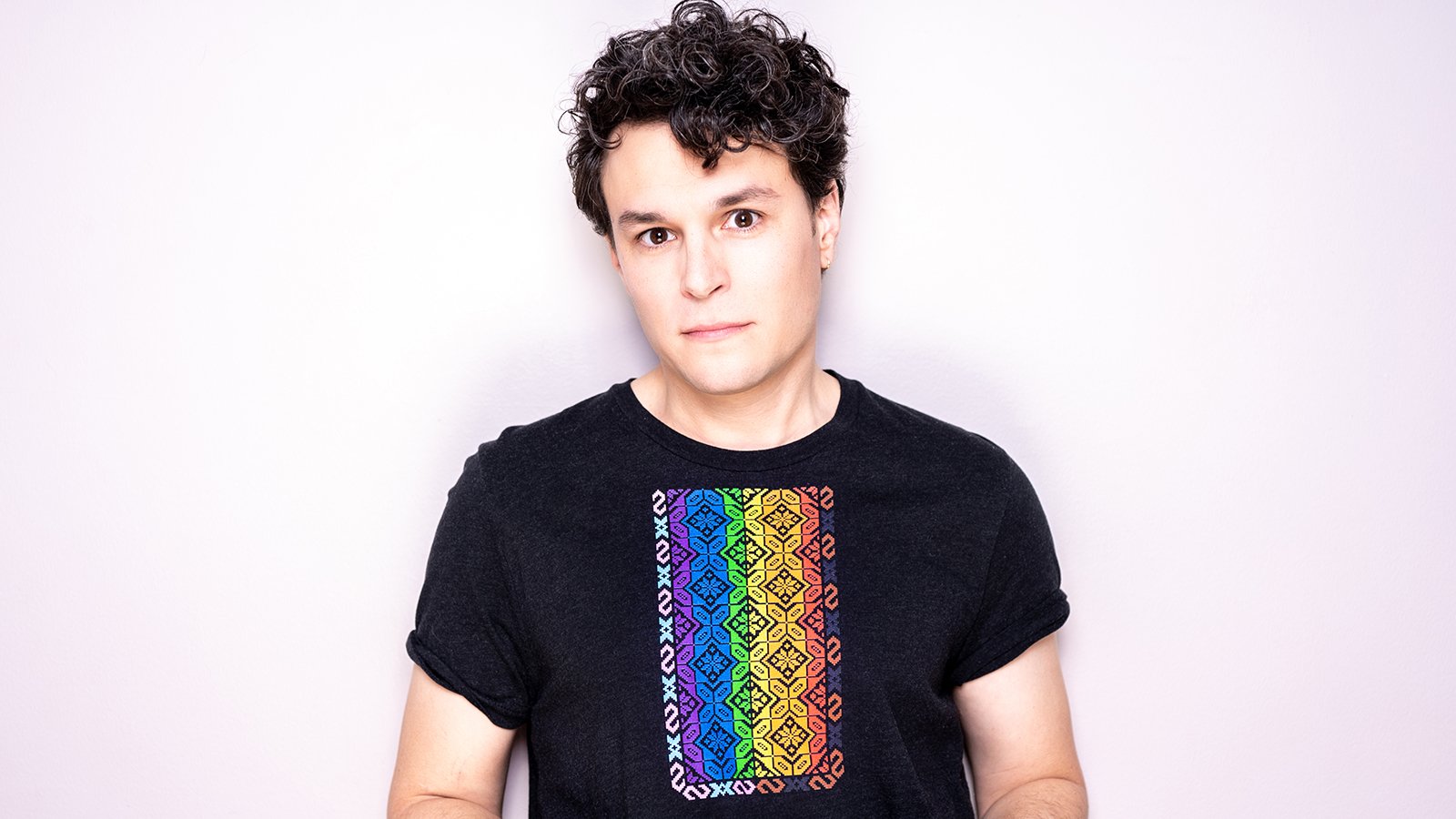Casey and Diana pays emotional tribute to the unsung heroes of the HIV/AIDS epidemic
Director Andrew Kushnir says Nick Green’s play also highlights the key role of the Princess of Wales in destigmatizing contact with patients
Andrew Kushnir. Photo by Dahlia Katz
Arts Club Theatre Company presents Casey and Diana to May 25 at the Stanley Industrial Alliance Stage
DURING HER LIFETIME, Diana, Princess of Wales was a favourite of royal watchers and sleazy tabloids alike. But her true legacy was cemented through the sheer fearlessness and deep empathy she brought to her public work.
Her efforts to raise awareness of the issue of landmines—which included personally touring an active minefield in Angola wearing a protective visor and flak jacket—led to an international ban on anti-personnel mines, for example.
Diana’s compassion increased understanding (and research funding) around diseases including cancer, leprosy, and HIV/AIDS—to the apparent chagrin of Queen Elizabeth II, who reportedly suggested that her daughter-in-law devote her time to “more pleasant” causes.
Never one to bend to the pressure of what was expected of her, Diana arguably did more than any other individual in the 1908s and ’90s to destigmatize people with AIDS and demonstrate to the public that, no, you couldn’t actually contract the virus by holding a patient’s hand or giving someone a hug.
She did this by visiting hospital wards, clinics, and hospice centres—including the HIV/AIDS unit at London Middlesex Hospital; Grandma’s House in Washington, D.C.; and Toronto’s Casey House—and getting up-close and personal with patients and staff.
“She was part of a series of watershed moments in the history of the AIDS epidemic,” Canadian theatre artist Andrew Kushnir says of Diana in an interview with Stir. “She first made contact in a media photograph with a patient with AIDS in 1987 in London. But even in 1991, when photos were published from Casey House, from her Toronto visit, it was still incredibly influential. I mean, there was so much stigma. There still is, but I think we have to imagine it amplified by a thousand, the stigma of making contact with someone who’s got HIV/AIDS.
“And the fact is, there were lots of people doing it,” Kushnir continues. “There were heroic nurses and heroic doctors, care teams, and family members who overcame their fear about contact. But Diana put it on the front of every paper, and really that closing of distance, of proximity, was part of a larger cultural shift away from fear and stigmatization and to care and compassion.”
Diana’s visit to Casey House in October 1991 provides the backdrop for Toronto-based playwright Nick Green’s Casey and Diana. The play had its world premiere at the Stratford Festival in 2023 under Kushnir’s direction. After helming runs in Toronto and Winnipeg, Kushnir now brings Casey and Diana to the Stanley Industrial Alliance Stage until May 24. The Arts Club Theatre Company production stars Lindsey Angell as Diana and Damien Atkins as Thomas, a Casey House resident who, after revealing that he wasn’t originally planning to be alive that much longer, has decided to stick around long enough to meet the Princess of Wales.
Kushnir says that although Diana is nominally the headliner, Green wrote the play to honour those who worked tirelessly behind the scenes to make a major impact, even if they will never be the subjects of their own Wikipedia entries.
“Nick is very community-minded, and ultimately the experience of the play is, yes, we get to meet a princess, but the concentric circles of care in this world are myriad, and there are so many heroes whose names we don’t know,” he says. “In the void that fear created—that stigma created, that ostracization created—there were so many people that stepped up and stepped in. And many and most were women. They were other queer folks in the community; lesbians, nurses. We even in our own cast have somebody who was a caregiver to various friends who died of AIDS. This is living memory. This play is not a period piece. It’s tapping into not only memory, but also trauma, the PTSD of that time. And you don’t have to look far.”
Audiences in other cities have had profound emotional responses to Casey and Diana, as have theatre critics, who have described Green’s play as “Kleenex-demanding”, “deeply moving”, and “cathartic”. While grief and tragedy are certainly unavoidable, given the subject matter, Kushnir assures Stir that the play is far from relentlessly dark.
“June Callwood, who founded Casey House, said ‘I want to give people who are dying of AIDS the velvet experience,’” the director says. “And I actually think Nick has done that with the play. I think if we’re going to be with grief, if we’re going to be with the hard stuff, and if we’re going to be with this hard bit of history—which is about the ostracization of people who needed the opposite; they needed people around them, they needed compassion—then it better be a velvet experience. And that means we’re gonna have to laugh together, we’re gonna cry together, there will be surprises, the unexpected. But it’s all in the spirit of having you walk out of that theatre feeling more alive, more connected, more aware, and more compassionate.” ![]()
























